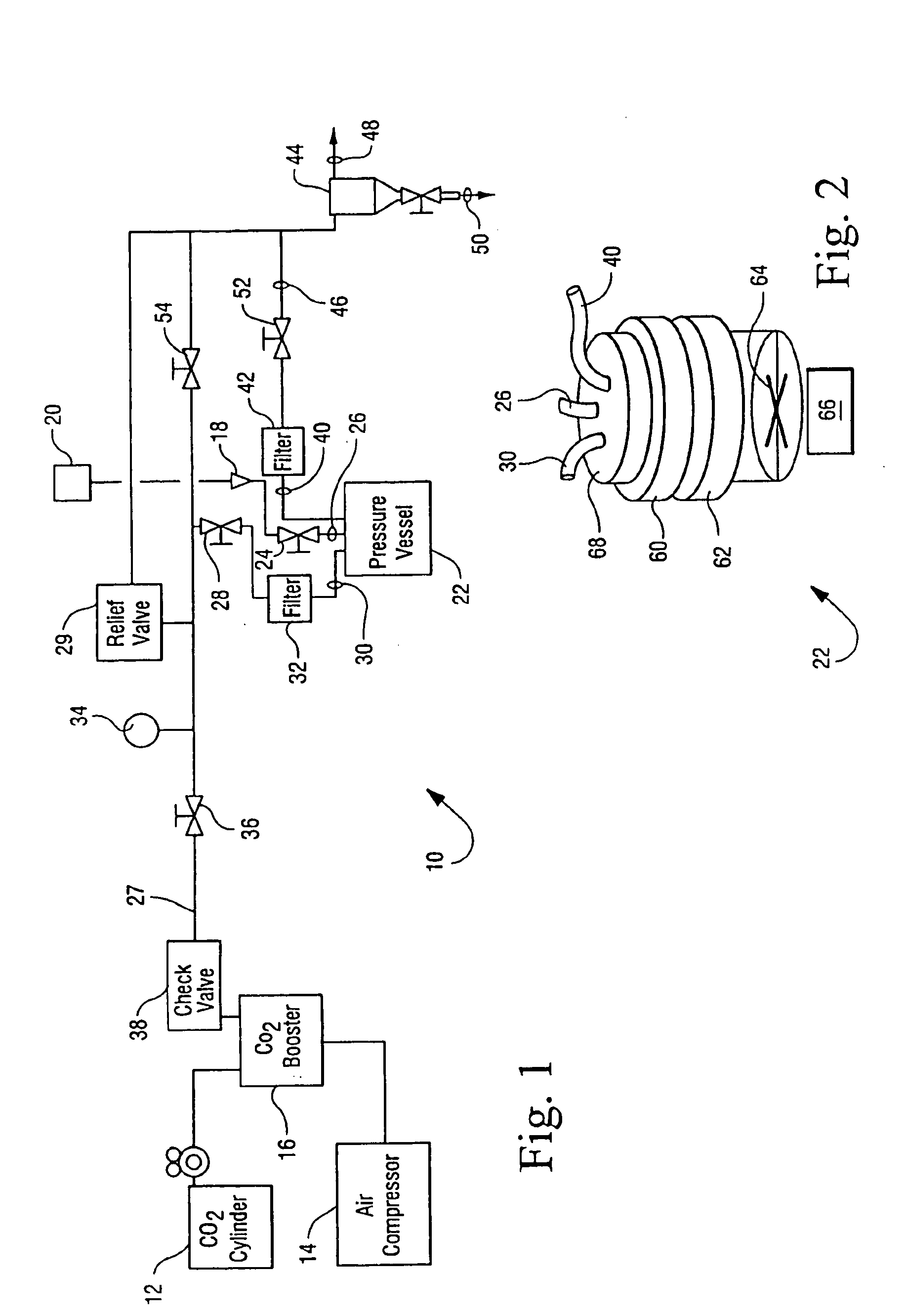Sterilization of drugs using supercritical carbon dioxide sterilant
- Summary
- Abstract
- Description
- Claims
- Application Information
AI Technical Summary
Benefits of technology
Problems solved by technology
Method used
Image
Examples
example 1
Effective Sterilization
[0041]The apparatus generally depicted in FIGS. 1 and 2 was employed for this Example. A sample of Methyl-Prednisone, a Corticosteroid was placed in a gas permeable bag or pouch made from a material such as Tyvek. The Corticosteroid was observed to be a fine powder-like substance that was dry to the touch. The pouch or bag was then sealed. The pouch was then placed in a stainless steel basket. An additive, Peracetic Acid (16 mL), was transferred by syringe onto the surface of a cotton pad and placed in the basket. The basket was then loaded into the 20 L reactor pressure vessel 22. The reactor pressure vessel 22 was regulated to pressurize with CO2 at a rate of 5 psi / second as discussed above and heated to 35° C. Stirring and agitation mechanisms were activated and the reactor vessel eventually reached 1500 psi. The process continued for 180 minutes, that is stirring while maintaining the vessel at 1500 psi and a temperature of 35° C. After 180 minutes the dep...
example 2
Non-Effective Sterilization
[0042]The apparatus generally depicted in FIGS. 1 and 2 was employed for this Example. A sample of Methyl-Prednisone, a Corticosteroid was placed in a gas permeable bag or pouch made from a material such as Tyvek. The Corticosteroid was observed to be a fine powder-like substance that was dry to the touch. The pouch or bag was then sealed. The pouch was then placed in a stainless steel basket. An additive, Peracetic Acid (16 mL), was transferred by syringe onto the surface of a cotton pad and placed in the basket. The basket was then loaded into the 20 L reactor pressure vessel 22. The reactor pressure vessel 22 was regulated to pressurize with CO2 at a rate of 75 psi / second and heated to 35° C. The pressurization rate was achieved by opening the valve from the CO2 and was allowed to pressurize unrestricted from the ambient pressure of the CO2 supply. Stirring and agitation mechanisms were activated and the reactor vessel eventually reached 1500 psi. The p...
PUM
 Login to View More
Login to View More Abstract
Description
Claims
Application Information
 Login to View More
Login to View More - R&D
- Intellectual Property
- Life Sciences
- Materials
- Tech Scout
- Unparalleled Data Quality
- Higher Quality Content
- 60% Fewer Hallucinations
Browse by: Latest US Patents, China's latest patents, Technical Efficacy Thesaurus, Application Domain, Technology Topic, Popular Technical Reports.
© 2025 PatSnap. All rights reserved.Legal|Privacy policy|Modern Slavery Act Transparency Statement|Sitemap|About US| Contact US: help@patsnap.com


